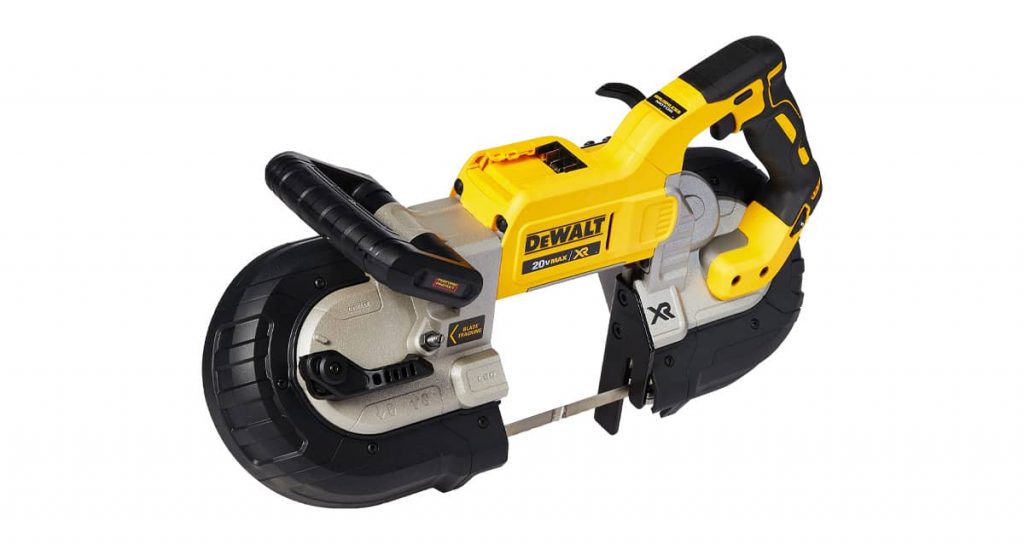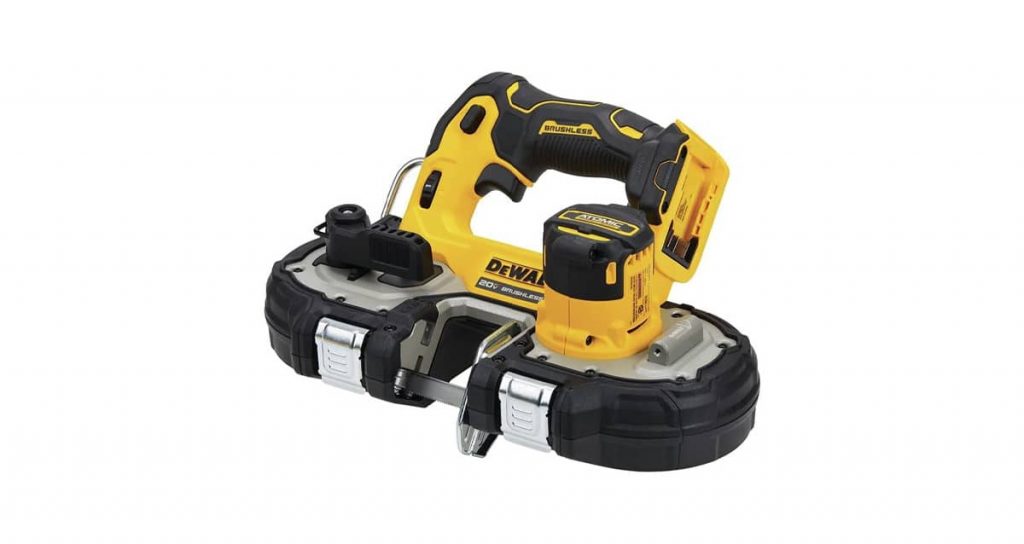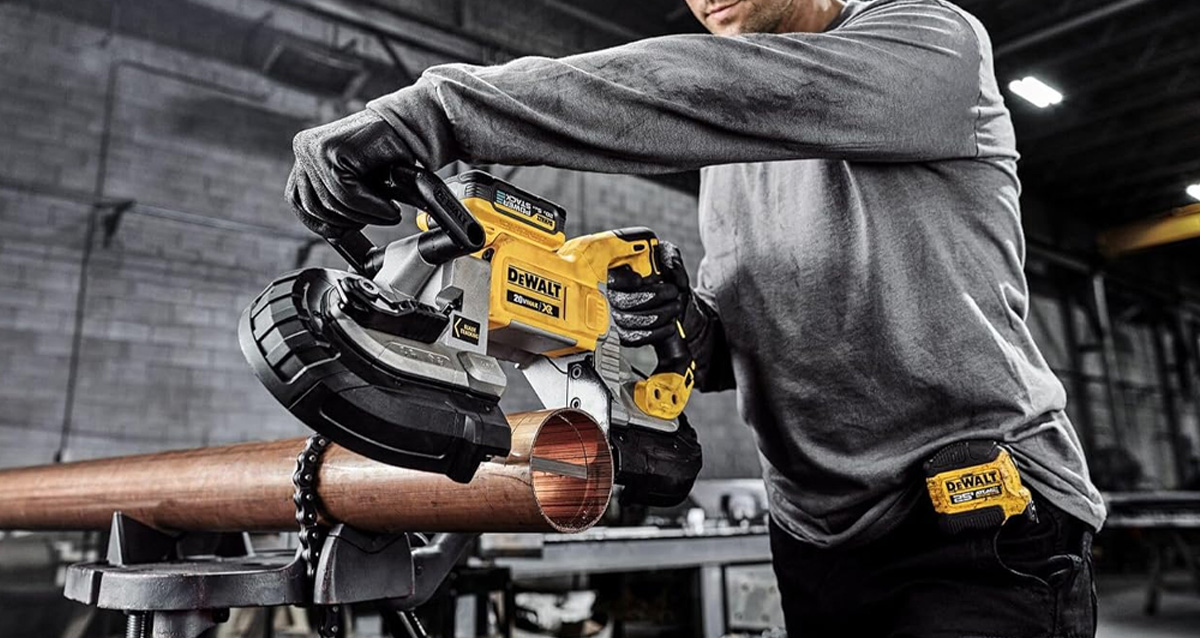Expert Tips on Selecting Blades for Optimal DeWalt Bandsaw Performance
The Importance of Blade Selection for DeWalt Bandsaws
Selecting the right blade for your DeWalt Bandsaw is essential for achieving the best possible performance and precision in your cutting tasks. Whether you’re slicing through metal, plastic, or wood, the right blade can make all the difference. DeWalt Bandsaws are known for their reliability and versatility, but even the best tools need the correct accessories to deliver exceptional results.
How Blade Characteristics Impact Cutting
Blades come in various widths, tooth designs, and materials, each suited for specific applications. For DeWalt Bandsaws, choosing the right blade involves understanding these characteristics:
- Width: Narrow blades are ideal for making intricate cuts and curves, while wider blades offer straighter cuts and are better for resawing.
- Tooth Design: The pattern of the teeth can affect the finish of your cut. A wavy tooth pattern is often used for cutting thinner materials, whereas a raker or hook tooth pattern might be better for thicker or harder materials.
- Material: Bi-metal blades are versatile and can cut a range of materials, while specialized blades like carbon steel or carbide-tipped are targeted for specific applications.
Tips for Selecting the Perfect Blade for Your DeWalt Bandsaw
- Assess the Material: Determine the material you’ll be cutting most often. Harder materials typically require blades with fewer teeth per inch (TPI) for a faster, rougher cut, while softer materials can be cut with blades having a higher TPI for a smoother finish.
- Understand the Job’s Demands: Consider the demands of your project. Are you doing detailed work that requires intricate cuts, or are you cutting large volumes of material where speed is more important?
- Know Your Bandsaw’s Specs: Be sure to match the blade to the bandsaw’s specifications. DeWalt’s range of bandsaws can accommodate different blade lengths and widths, so check your model’s requirements.
- Opt for Quality: Invest in high-quality blades from reputable suppliers like portaband.com. Quality blades might cost more upfront, but they’ll likely last longer and perform better, saving you money and frustration in the long run.
- Change Blades for Different Tasks: Don’t rely on a single blade for all tasks. Instead, switch between blades optimized for different materials and cuts. This will extend the life of your blades and improve performance.

DeWalt D28770 Deep Cut Variable Speed Band Saw
For professionals who need a rugged tool capable of precise, deep cuts, the DeWalt D28770 Band Saw stands ready to deliver. This tool is constructed with a cast aluminum body for durability and is thoughtfully designed to be both lightweight and well-balanced, making it a reliable choice for extended use. The D28770 excels with a 6.0 Amp motor and a 4-3/4″ cutting capacity, handling a variety of materials from metal to plastic. Its blade tracking window and tensioning lever simplify blade adjustments, ensuring optimal performance. The innovative sight light feature is a significant advantage, allowing for clear cut line visibility in any environment. With a speed range of 80-280fpm and an array of ergonomic features, including a large front handle and a soft grip back handle, the D28770 combines power, precision, and comfort for all your cutting needs.
DeWalt DCS374B 20V MAX* XR® Cordless Brushless Deep Cut Band Saw:
The DeWalt DCS374B 20V MAX* XR® Cordless Brushless Deep Cut Band Saw is a testament to cutting efficiency and power, engineered for those who demand deep cut capacities without being tethered to a cord. Its robust brushless motor enhances runtime and speed, and the saw’s formidable 5-inch cutting capacity welcomes larger materials with ease. The unit’s weight of 12.4 pounds balances durability and ease of handling, within a frame measuring 24.4″L x 13″W x 8.27″H. It is designed for comfort and versatility with tool-less blade changing for swift adjustments and a variable speed setting for enhanced control over a variety of materials. Powered by DeWalt’s 20V MAX* XR® battery system, the DCS374B ensures that you have the energy to complete the task at hand efficiently and accurately, highlighted by the onboard LED work light.
DeWalt DCS377B Atomic 20V MAX* Brushless Cordless Compact Band Saw:
The DeWalt DCS377B Atomic Compact Band Saw defines efficiency and convenience in the jobsite cutting category. This lightweight powerhouse, tipping the scales at just 7.72 pounds, delivers precise cuts with one-handed ease, especially in constrained spaces, thanks to its compact dimensions of 11.5″L x 9.57″W x 1.7″H. Its 1-3/4″ cut capacity is impressive for its size, allowing it to slice through modestly sized materials with agility. The saw benefits from a variable-speed trigger and dial, complemented by a 14/18 TPI blade, making it versatile across various materials. Cordlessly powered by a 20V battery and boasting a brushless motor, the DCS377B is designed for longevity and sustained performance. An integrated LED work light dispels shadows to enhance cut line visibility, further cementing this tool’s status as a go-to for professionals and DIY aficionados.

Compatible Blade Sizes for DeWalt Band Saw Models:
DeWalt DCS377B Atomic 20V MAX Brushless Cordless Compact Band Saw:
For the DeWalt DCS377B Atomic 20V MAX* Brushless Cordless 1-3/4″ Compact Band Saw, you’ll need a blade that’s 32-7/8 inches in length, 0.020 inches in thickness, and 0.5 inches in width. Typically equipped with 14/18 TPI, this blade size is perfect for the compact saw’s design, allowing for optimal cutting of small to medium-sized materials with one-handed operation. Its size also makes it conducive for precise cuts in tight spots, a frequent necessity on cluttered jobsites or in complex assemblies.
DeWalt DCS374B 20V MAX XR® Cordless Brushless Deep Cut Band Saw:
For larger and more demanding cuts, the DeWalt DCS374B accommodates a longer 44-7/8 inch blade that maintains the same 0.020-inch thickness and 0.5-inch width. The size of this blade allows it to handle a deep cut capacity, ideal for slicing through thicker and more robust materials. Its extended length and the power of the 20V MAX* XR® system together provide a harmonious balance between the muscle needed for tough jobs and the precision required for quality craftsmanship.
DeWalt D28770 Deep Cut Variable Speed Band Saw:
While information for the Dewalt D28770‘s blade size wasn’t fully provided, typically, DeWalt’s deep cut saws use blades that are 44-7/8 inches in length, matching the specs of the DCS374B. This uniform blade size for deep-cut saws is by design, providing consistency across their range and making it easier for users to stock replacement blades that fit multiple models. The blade size complements the saw’s construction, with ample cut capacity and variable speed settings to tackle diverse materials and cut types, from straight cuts to intricate contours.
Recommended Teeth Per Inch (TPI) for cutting various materials with band saw blades:
| Material Type | Thickness or Type | Recommended TPI | Notes |
|---|---|---|---|
| Thin Metal Sheets | E.g., EMT, conduit, copper piping | 18-24 TPI | Finer teeth for cleaner cuts and prevention of grabbing on thin materials. |
| Medium Metals | E.g., angle irons, steel pipes, tubing up to 1/4 inch thick | 14-18 TPI | Balances cut speed and finish, suitable for medium-thickness materials. |
| Thick Metals | E.g., solid steel bars, stainless steel, 1/2 inch thick or more | 8-10 TPI | Lower TPI for faster cuts in thicker materials without clogging. |
| Soft Metals | E.g., aluminum, softer alloys | 10-14 TPI | Medium TPI for clean cuts in softer metals without excessive heat. |
| Plastics and Composites | All types | 14-18 TPI | Fine-toothed blades for clean cuts that prevent chipping and melting. |
General Tips for Selecting and Using Band Saw Blades:
When it comes to band saws, the blade is the heart of your cutting operation. A well-chosen blade can dramatically enhance your saw’s performance, yielding faster, cleaner, and more precise cuts. It’s crucial to match the blade to the material you’re cutting, considering the material’s hardness and thickness, as well as the desired finish of your cut. Always opt for a slightly higher TPI if you’re aiming for a finer finish, particularly on materials that are prone to chipping or when cutting shapes that require more detailed work. Additionally, for materials that might wear down blades faster, such as metals, investing in bi-metal or carbide-tipped blades can increase the longevity of your tools. Remember to regularly check your blade’s tension and sharpness, and never hesitate to replace a blade if it shows signs of wear or damage—this will ensure top-notch performance and safety during your projects.
Blade Maintenance: Keeping Your DeWalt Bandsaw in Peak Condition
To ensure that your DeWalt Bandsaw and its blades remain in top condition, follow these maintenance tips:
- Inspect Blades Regularly: Before and after each use, inspect the blade for signs of wear or damage. Look for dullness, missing teeth, or any deformities.
- Clean After Use: Remove any accumulated debris from the blade to prevent residue buildup, which can affect the cutting process.
- Proper Storage: Store blades in a dry, safe place where they won’t be damaged. Hanging them on a wall rack or storing them in their original packaging are good practices.
- Lubricate When Needed: Some blades require lubrication to maintain their cutting ability and prevent rust. Use an appropriate lubricant as specified by the blade manufacturer.
When to Replace Your DeWalt Bandsaw Blade
Knowing when to replace a blade is as vital as selecting the right one. If you notice any of the following, it might be time for a new blade:
- Increased Cutting Difficulty: If cutting becomes more challenging, or if the bandsaw strains to cut materials it once handled easily, the blade may be dull.
- Poor Cut Quality: If the finish of your cuts starts to deteriorate, it’s likely the blade has become dull or damaged.
- Visible Wear: Any visible signs of wear, such as cracks, bent teeth, or significant dullness, are clear indicators that it’s time for a blade change.
Your DeWalt Bandsaw is a versatile and powerful tool, and with the right blades, it can perform at its best, delivering clean, precise cuts every time. By selecting the appropriate blade for the material you’re cutting and ensuring proper blade maintenance, you’ll be able to handle any cutting task with confidence. For a broad selection of high-quality bandsaw blades that will help you optimize the performance of your DeWalt bandsaw, visit portaband.com, where precision meets durability in every cut.





